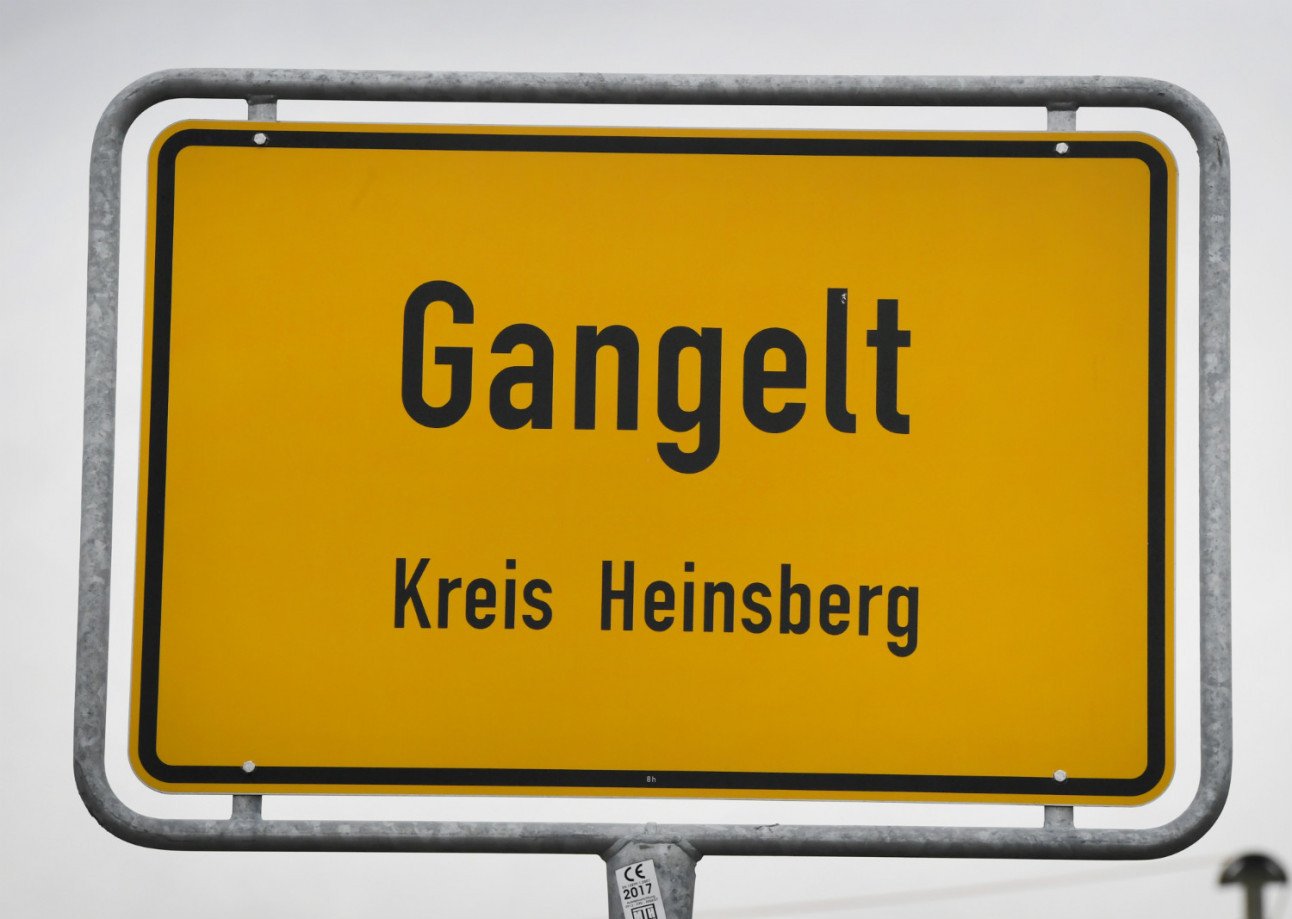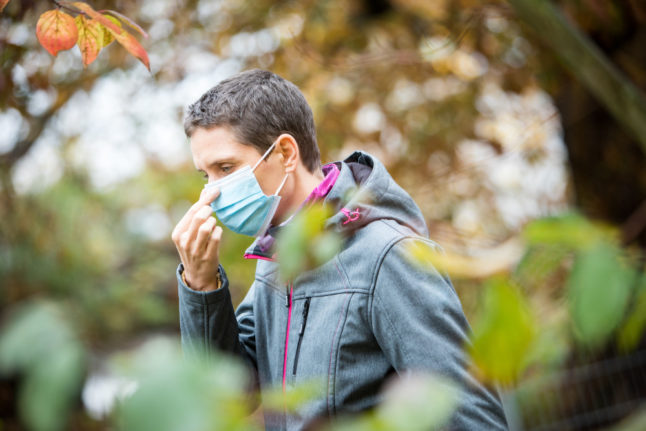Among Germany's population of 83 million people, the number of confirmed infections grew to more than 41,500 on Thursday afternoon, March 26th, according to data from Johns Hopkins University and the Robert Koch Institute. The number of deaths connected to the virus stands at around 239.
The actual number of COVID-19 cases is thought to be higher. Depending on an individual state's policies, many other possible cases may not have been tested because they show only mild symptoms or have not been in contact with a known case.
However, on Thursday, Christian Drosten, a Berlin-based senior virologist, said that Germany was carrying out an “extremely high number” of coronavirus tests, which meant experts were aware of more cases, including milder ones.
He said that was one of the reasons why Germany had so few deaths compared to the number of infected people could be explained by the fact that we carry out an extremely large number of laboratory diagnostic tests,” said Christian Drosten, who heads the Institute of Virology at Berlin's Charite University Hospital.
“Estimates from the last days show that we are carrying out half a million tests a week,” he added.
There are three parts of Germany which have been particularly badly affected – the western state of North Rhine-Westphalia (NRW), the southeastern state of Bavaria and the southwestern state of Baden-Württemberg.
READ ALSO: LATEST: Germany ramps up coronavirus tests to 500,000 a week
North Rhine-Westphalia
As of Thursday afternoon, the western German state of NRW had more than 10,900 cases – over a thousand more than the day before – and 75 deaths. Just over two weeks ago, on March 9th, the state had registered about 500 cases and the first two deaths in Germany due to coronavirus.
With nearly 18 million residents, NRW is the most populous state in Germany so it's perhaps not a huge surprise that these are where the highest numbers are.
However, it has spread quickly through the region, particularly in one district where a couple unknowingly infected with coronavirus celebrated carnival in February.
The couple from Gangelt in the Heinsberg district were on February 25th confirmed to be the first cases in NRW.
READ ALSO: Authorities in western Germany take action to stop spread of coronavirus
After the discovery of coronavirus in Heinsberg, which is the westernmost district of Germany, where about 250,000 people live, around 1,000 people reportedly went into domestic quarantine in a bid to stall the spread of the virus.
Schools, Kindergartens and public buildings such as courts were closed.
On Sunday the federal government ordered strict coronavirus measures, although they stopped short at a full lockdown.
These measures have been introduced in NRW, with heavy fines for those who flout them.
 The district of Heinsberg is particularly affected. Photo: DPA
The district of Heinsberg is particularly affected. Photo: DPA
Now gatherings in public of more than two people are banned (excluding families), non essential shops and restaurants have closed (although they can remain open for takeaway food) and
With 1,090 coronavirus infections and 27 deaths, the district of Heinsberg continues to be the most affected part of NRW.
This is followed by the city of Cologne with 980 confirmed cases.
Bavaria
As of Thursday, Bavaria had more than 8,840 confirmed cases and 52 deaths, making it the second worst-hit area in Germany.
Bavaria, a region of 13 million people, became the first German state to impose a lockdown.
It has also declared a disaster situation with immediate effect to allow for the German army to be drafted in if needed and for hospital emergency contingency plans.
READ ALSO: Bavaria declares 'disaster' situation in bid to fight corona crisis
“We are not locking Bavarians in but we are winding down public life almost completely,” Söder said at a press conference, adding that restaurants in the region of 13 million people would be closed and citizens would no longer be allowed to meet in groups outside.
Last Friday, March 20th Germany’s largest state state had over 3,000 confirmed cases. And on Friday March 9th there were 250 cases.
Here's an overview of the confirmed cases as of Thursday March 26th:
!function(){“use strict”;window.addEventListener(“message”,function(a){if(void 0!==a.data[“datawrapper-height”])for(var e in a.data[“datawrapper-height”]){var t=document.getElementById(“datawrapper-chart-“+e)||document.querySelector(“iframe[src*='”+e+”‘]”);t&&(t.style.height=a.data[“datawrapper-height”][e]+”px”)}})}();
Two particularly badly affected areas of Bavaria – the villages of Mitterteich, in Tirschenreuth, which has 7,000 people and Wunsiedel, with a population of around 9,600, – have already instructed curfews on residents this week.
The District Office of Tirschenreuth was first to order a lockdown on the town of Mitterteich because of the spread of the coronavirus there.
READ ALSO: Bavarian town becomes first in Germany to impose lockdown
As well as being home to many businesses, Bavaria is close to badly affected areas such as northern Italy, and receives a lot of tourists due to its proximity to the Alps.
This could partly explain the high numbers.

Shoppers queue for a food stand at a weekly market on Thursday, with a safe distance between them. Photo: DPA
Baden-Württemberg
Bavaria is closely followed by Baden-Württemberg which had more than 7,280 cases and 56 deaths on Thursday.
The state has also introduced strict social distancing measures as put forward by the federal government in a bid to stem the spread of the virus, but has stopped short of a lockdown.
Last Friday, March 20th the state had registered 3,600 confirmed cases and 17 deaths, showing the steep rise in cases, a trend seen in other parts of Germany.
Like Bavaria, Baden-Württemberg is home to several international companies and is close to other badly-hit countries including France and Switzerland which may explain why there are so many cases.
Which cities and districts are particularly affected?
The Robert Koch Institute (RKI) now also evaluates the case numbers in the individual districts. Munich in Bavaria now has the largest number of cases when it comes to cities (1,503), replacing Hamburg (1,265) (data as at 26th March, 6pm).
According to the RKI, no patients in the Hanseatic city have died; however two deaths have been registered in the Bavarian capital so far. The districts of Esslingen (492), the city of Stuttgart (503) and the Hanover region (411) have also recorded above average cases.
Most cases per inhabitant are still in Heinsberg (NRW) with around 1,000 cases (among 254,322 inhabitants) and 27 deaths.
READ ALSO: 'The mortality rate is puzzling': Why does Germany have a lower coronavirus death rate
The district of Tirschenreuth (Bavaria) also reports high figures, with 178 cases (72,504 inhabitants) and three deaths, as does the Hohenlohe district in Baden-Württemberg with 278 cases (112,010 inhabitants). Three people have died there.
Almost every city in Germany has recorded a coronavirus case. But according to the RKI, no cases have been registered in the city of Kaufbeuren and in Kempten, both in Bavaria.
Meanwhile, only one infection has been detected in Eisenach (Thuringia) and one in the district of Prignitz (Brandenburg). Otherwise all remaining parts of Germany are affected by COVID-19.
Who are the patients?
According to Lother Wieler, President of the RKI, this is the current profile of the patients: they are on average 46-years-old and the average age of those who have died is 81.
Out of a sample, men (54 percent) are still more affected than women (46 percent). The most frequent symptoms are cough and fever, according to clinical information on more than 26,000 cases of infection.
‘Calm before the storm’
Federal Health Minister Jens Spahn said on Thursday, March 26th, he expected the burden on the health care system to continue to rise.
Although the government is already thinking about how the country will reintroduce public life when the outbreak eases, Spahn said it was important to remember: “This is still the calm before the storm.
“No one can say exactly what will happen in the next few weeks,” he said. Therefore, Germany must slow down the spread of the coronavirus and at the same time increase the capacity of hospitals, including those with intensive care beds, he said.
“At the present time, it is not possible to say for certain whether the infection dynamics have weakened,” said the RKI head Wieler.
“Some cities and districts have managed to get major outbreaks under control.”
Some of the outbreaks occurred in connection with festivities or travel. “I do not understand why people still celebrate festivities,” added Wieler.
In Germany, several thousand people have already recovered from coronavirus infections. “We estimate that at least 5,900 fellow citizens have now recovered,” Wieler said.
Is everyone being tested?
No. Spahn confirmed that between 300,000 and 500,000 tests were carried out in Germany last week alone, with about 10 percent coming back positive.
“That's likely to be the most tests of any country in the world, in both absolute and relative terms,” Jens Spahn said.
He added that it was still important that they were used in a targeted manner. The National Association of Statutory Health Insurance Physicians (KBV) asked for understanding that coronavirus tests are only carried out in people with disease symptoms.
Although the capacities are large, they are not enough “to simply test 83 million”, said Spahn.
What matters is the doctor's decision. “We want to test a lot, but we want to test in a more targeted way”, explained Spahn.



 Please whitelist us to continue reading.
Please whitelist us to continue reading.
Member comments